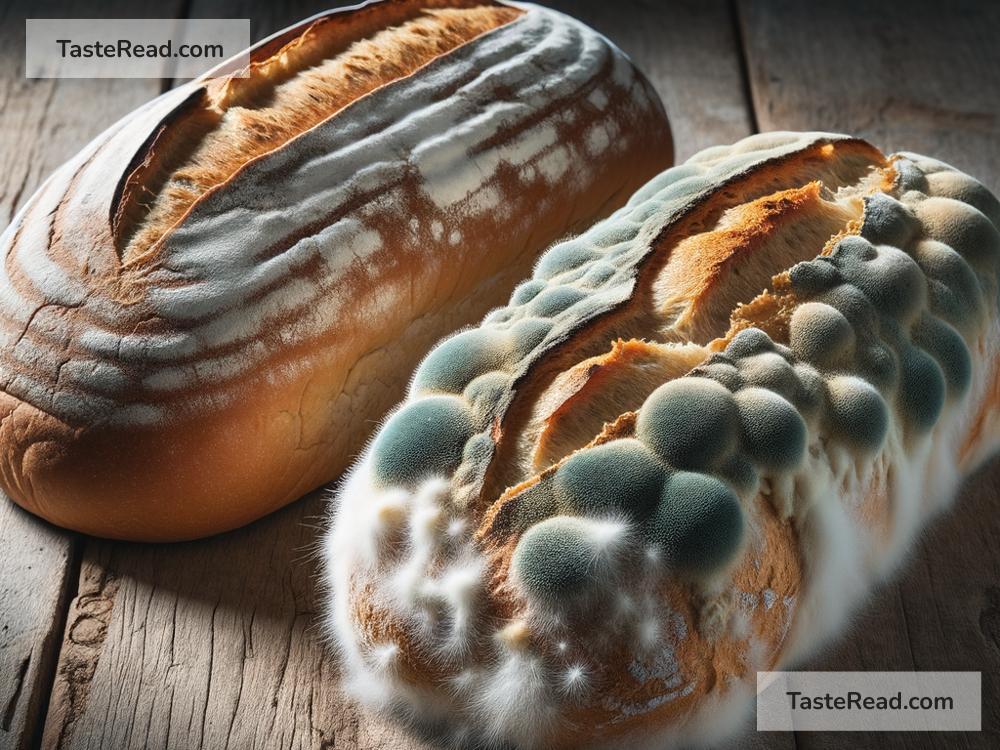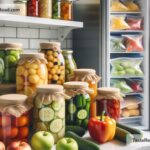The Science of Food Spoilage: Causes and Prevention
When you open your refrigerator, pull out a container of leftovers, and notice it smells bad or has strange fuzz growing on it, you’ve encountered food spoilage. Food spoilage is a process that happens to almost all types of food over time. The science behind spoilage explains why food goes bad and how you can prevent it. In this article, we’ll explore the causes of food spoilage and simple ways to keep your food fresh for longer.
What Is Food Spoilage?
Food spoilage happens when food’s quality changes in a way that makes it unsafe or unpleasant to eat. Spoiled food might taste bad, smell strange, lose its texture, or even grow mold. Spoilage often means food is breaking down because of bacteria, fungi, or chemical changes.
Spoiled food isn’t just gross; it can make you sick if you eat it. That’s why food safety is important. Scientists study spoilage to help people understand how to store food properly and avoid waste.
Causes of Food Spoilage
Here are the main things that cause food to spoil:
1. Microorganisms
Tiny living organisms like bacteria and fungi live on all food. Some of these microorganisms are harmless, but others can cause spoilage.
- Bacteria: Certain types of bacteria, such as E. coli and Salmonella, make food unsafe to eat. Bacteria multiply quickly in warm and moist environments, causing food to rot or smell sour.
- Mold: Mold is a type of fungus. It grows on food in damp or warm conditions, producing fuzzy spots that look blue, green, or white. Mold can make food unappetizing and harmful to eat.
2. Enzymes
Enzymes are natural chemicals found in living things, including food itself. They help fruits and vegetables ripen, but once food is fully ripe, enzymes keep working and lead to over-ripening and spoilage. For example, a banana may change from yellow to brown and eventually black because enzymes keep breaking it down.
3. Oxidation
Oxidation happens when food reacts with oxygen in the air. This is why some foods, like apples or avocados, turn brown after you cut them. Oxidation can also cause fats and oils to go “rancid,” making them taste bad.
4. Temperature and Moisture
Temperature and moisture affect how fast food spoils. Warm temperatures and damp environments encourage bacteria and mold to grow. This is why we refrigerate many types of food—to slow down spoilage.
5. Light Exposure
Exposure to light can change the vitamins, fats, and oils in food, breaking them down over time. For example, milk left in a sunny room can spoil faster than milk kept in the dark.
Signs of Food Spoilage
Spoiled food often shows noticeable signs, such as:
– Strange or sour smells
– Slimy or mushy textures
– Discoloration (e.g., brown spots on fruits or vegetables)
– Visible mold or fuzz
– Unusual taste
Always trust your senses! If food looks, smells, or feels questionable, it’s better to avoid eating it.
How to Prevent Food Spoilage
Thankfully, there are plenty of ways to slow down food spoilage so your groceries last longer and you waste less. Here are some tips:
1. Keep Food Cold
Refrigeration slows down bacteria, mold, and enzyme activity. Store foods like meat, dairy, and fresh produce in the fridge at 40°F (4°C) or below. For even longer storage, freeze foods at 0°F (-18°C).
2. Use Proper Storage
Store food in airtight containers to keep out moisture and oxygen. Wrap fresh produce to prevent bruising or drying out. Dry foods, like rice and pasta, should be kept in cool, dry places.
3. Avoid Cross-Contamination
Always use clean utensils and cutting boards to prepare food. Wash your hands before handling food to prevent spreading harmful bacteria.
4. Check Expiration Dates
Pay attention to expiration or “best-by” dates on packaging. These dates indicate how long food will stay fresh.
5. Preserve Food
Pickling, drying, vacuum sealing, and canning are some methods used to preserve foods. These methods reduce moisture, oxygen, and bacteria, making food last longer.
6. Minimize Food Waste
Plan your meals and buy only what you need to avoid overstocking your fridge. Use leftovers quickly and freeze extra portions to make sure you don’t waste food.
Why Food Spoilage Matters
Understanding the science of food spoilage helps prevent food waste and keeps us safe. In today’s world, wasting food is a big problem. According to studies, about 30% of food produced globally goes to waste, often due to spoilage. Preventing food spoilage not only saves money but also reduces environmental harm caused by throwing away food.
By storing food properly and using simple techniques, you can slow spoilage, enjoy fresh meals, and waste less. Next time you spot a banana getting too ripe or leftovers lingering in the fridge, remember the science behind spoilage—and take steps to prevent it!
Final Thoughts
Food spoilage might happen naturally, but we can control factors like temperature, moisture, and exposure to air. Whether it’s refrigerating fresh produce or storing grains in dry containers, little habits go a long way in keeping your food fresh. With a better understanding of why food spoils and how to stop it, you’ll not only save money and time but also contribute to solving food waste problems. Happy storing!


